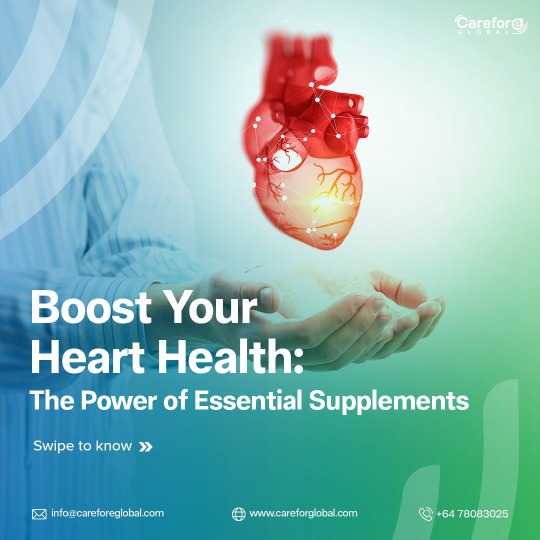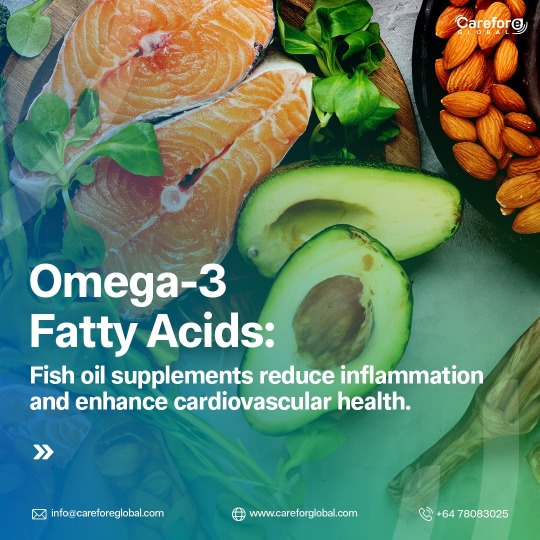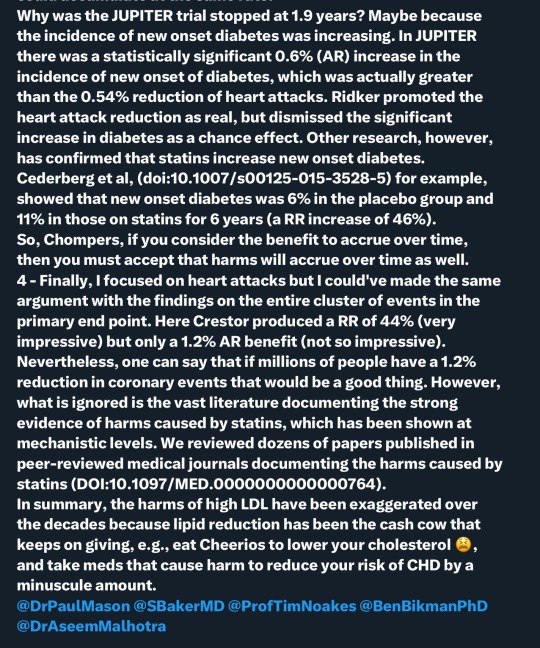#Statins
Note
Hi there!
I just came across your post about the pharma led guidelines (I am a family nurse practitioner) and I was wondering if I could get your sources for the statin info. I’ve been trying to convince my father to stop taking his as I don’t believe it has any benefit to him and as you were saying pharma is enforcing medical guidelines that put more people on medications unnecessarily. But he is a science/evidence guy and I am trying to build up some sources before bringing it up again. Your help would be so appreciated!
Take care and have a merry Christmas!
The info in the post is from a book called Sickening, by John Abramson, MD MSc. He is a statistician and did the math himself, though he does not mention which specific studies he took the data from.
I would direct you to a website site called thennt.com that does a very good job at breaking down the math and studies surrounding statins however, and they do cite sources.
Statins for Primary Prevention for People at Low Risk: https://thennt.com/nnt/statins-persons-low-risk-cardiovascular-disease/
Statins for Primary Prevention for People at Higher Risk Without Prior Heart Disease: https://thennt.com/nnt/statins-for-heart-disease-prevention-without-prior-heart-disease-2/
Statins for Secondary Prevention in People With Heart Disease: https://thennt.com/nnt/statins-for-heart-disease-prevention-with-known-heart-disease/
From these breakdowns, if your father is taking a statin because he already had a heart attack or stroke, the evidence suggests that the drug is worth continuing to take, however, if he has not had a heart attack or stroke, no matter his risk level, the risks of statin therapy (diabetes, myopathy, rhabdomyolysis) outweigh the benefits.
28 notes
·
View notes
Text

RIP. Japanese biochemist Akira Endo, discover of cholesterol-lowering statin drugs, died on June 5, 2024 at age 90.
Statins, prevent heart attacks or strokes. It can help lower the level of LDL or the "bad cholesterol" in the blood and reduce the production of LDL inside the liver.
#lipoprotein #cholesterol #LDL #statins #cardiology
5 notes
·
View notes
Text
Good News From Israel
Israel's Good News Newsletter to 2nd Apr 23
An Israeli-led team has discovered the cause of metastatic pancreatic cancer.
100,000 Muslims say Ramadan prayers at the holiest Jewish site.
The first Shiite Muslim country to open its embassy in Israel.
Israeli scientists create a robot the size of a microscopic cell.
Israeli researchers greatly enhance the health properties of seaweed.
Toyota, Ford, and Volkswagen adopt Israeli EV and navigation technology.
Jerusalem’s Tower of David is a “World’s Greatest” site.
See why two women (Jewish and Muslim) have formed a special friendship.
Read More: Good News From Israel

It's all go in Israel. As if to answer the Biblical demand to "Let My People Go", Israelis have certainly been "on the go" since my last newsletter. In fact I had to go over my self-imposed limit of 50 positive news items, otherwise I would never have caught up.
Israeli scientists are going all out, to make debilitating medical conditions go away. Cancer, diabetes, reflux, muscle pain, heart arrhythmia, cerebral hemorrhage, and respiratory diseases will one day be gone, thanks to Israeli medical breakthroughs. So will religious intolerance, landmines, glass ceilings, water scarcity, pollution, and infant death from heart deformities - all being targeted by Israelis going beyond the call of duty to make a better world.
Israeli technology has gone into orbit again with the launch of another satellite; it has made robots go so small that they can control where individual cells go; it can analyze where tiny fragments of broken objects should go; it can find where lost children or missing luggage has gone. Israeli unemployment has gone down again, supermarket prices should also begin to go down soon; Israeli startups are working to make the cost of health care go down; and during Passover visitors can go for free to many Israeli sites and museums.
#Artificial Intelligence#Azerbaijan#Cancer#Drones#Dubai#Israel#Jerusalem#Jewish#microbiome#Passover#Ramadan#reflux#robot#seaweed#solar#statins#Temple Mount#Vegan Cheese
17 notes
·
View notes
Text
High-intensity statins reduce the risk for recurrent cardiovascular events in patients with established coronary artery disease. Along with lifestyle counseling and cardiac rehabilitation, they should be prescribed to patients who have experienced cardiovascular events. High-intensity statins include atorvastatin, 40–80 mg daily, and rosuvastatin, 20–40 mg daily. Moderate-intensity statins include simvastatin, 20–40 mg daily; atorvastatin, 10–20 mg daily; and rosuvastatin, 5–10 mg daily. Monotherapy with non-statin medications (niacin, ezetimibe, bile acid sequestrants, and fibrates) does not reduce cardiovascular morbidity or mortality. The PCSK9 inhibitors evolocumab and alirocumab are second-line or add-on therapies to maximally tolerated statins. They should be reserved for use in patients who are statin-intolerant or who do not achieve their target LDL-cholesterol level with conventional therapies.
3 notes
·
View notes
Photo

Joseph L. Goldstein as born on April 18, 1940. An American biochemist. He received the Nobel Prize in Physiology or Medicine in 1985, along with fellow University of Texas Southwestern researcher, Michael Brown, for their studies regarding cholesterol. They discovered that human cells have low-density lipoprotein (LDL) receptors that remove cholesterol from the blood and that when LDL receptors are not present in sufficient numbers, individuals develop hypercholesterolemia and become at risk for cholesterol related diseases, notably coronary heart disease. Their studies led to the development of statin drugs.
#joseph l. goldstein#cholesterol#statins#nobel prize#nobel prize winners#science#science history#science birthdays#on this day#on this day in science history
2 notes
·
View notes
Text





#metabolic#type 2 diabetes#type 1 diabetes#ndc#chronic illness#diabetes#the lure and lies of processed food nutrition and modern medicine#robert h lustig#robert h lustig md msl#statins#statin side effects#ldl#cholesterol#metabolic syndrome
0 notes
Text
Are You On Statins? Why?
"At least 50 million Americans swallow a statin-type cholesterol-lowering drug daily. Atorvastatin is the most frequently prescribed drug in America. Many people take it to prevent an initial heart attack.
"There’s no question that statins lower LDL. The question is whether that will result in a longer, healthier life for people without diagnosed heart disease.
"A comprehensive review found that people taking statins get on average 12 extra days of life thanks to the medicine (Journal of General Internal Medicine, August 2019). The analysis showed that people with heart disease get an average postponement of death by 17 days, while those without heart disease get 10 additional days."
– The People's Pharmacy, June 10, 2024
But you do you.
0 notes
Text
Statins Market Scenario Forecast to 2031
The Insight Partners stands out as a reliable ally in the syndicated market research and consultation through its steadfast commitment to the market research industry. With extensive experience and proven dedication, we have been delivering outstanding outcomes. With a team of researchers catering to distinct business requirements, we can emerge as a trusted research partner in the past decade.
By prioritizing precision and trust ahead, we are proud to announce the addition of the latest offering titled “Statins Market Growth Outlook to 2031”. This report ensures spotless coverage of recent updates and a range of business environment factors impacting the Statins market growth. The meticulous approach opted by our researchers can assist companies in transforming business space into the Statins market.
Statins market report offers a comprehensive analysis of regional and global scenarios. The scope of the market report extends to the competitive landscape, cost analysis, key players, specific market regions, profit margin, and market situation. A glance at wide-ranging factors restricting Statins market growth is deliberately included in this study.
1 note
·
View note
Text
coq10 benefits
Discovery and Characteristics of Coenzyme Q10
In 1957, an American doctor discovered coenzyme Q10 in the hearts of cattle. However, it was not until 1974 that Japan became the first to commercialize and market it as a product. Although discovered in the United States, Japan took the initiative to commercialize it due to specific reasons. Coenzyme Q10 is a substance produced naturally in our bodies. Since substances found in living organisms or nature are not protected by patents, materials such as coenzyme Q10 and policosanol are no exception. The lack of patents means no profit for companies, leading multinational pharmaceutical companies to abandon the development of coenzyme Q10 as a therapeutic agent. This signifies that it is not beneficial not only for pharmaceutical companies but also for hospitals and doctors.
Functions and Effects of Coenzyme Q10
Coenzyme Q10, also known as CoQ10 or CoQten, exists throughout our bodies. To facilitate the activity of cells in our bodies, nutrients need to be converted into energy. CoQ10 acts like a lubricant in this process, aiding cells in smooth operation. As a result, it is found abundantly in areas of the body, particularly the heart, which requires it the most. This is one of the reasons why CoQ10 was initially discovered in the hearts of cattle.
Various benefits of CoQ10 are now becoming more widely known. In 1978, Peter Mitchell conducted research on how CoQ10 helps prevent heart disease, leading to him being awarded the Nobel Prize. There are also research findings suggesting that CoQ10 delays aging. One of the causes of aging is reactive oxygen species. Vitamin E helps neutralize reactive oxygen species. However, vitamin E can become harmful after neutralizing reactive oxygen species. This is where CoQ10 plays a crucial role. CoQ10 helps reduce the side effects that vitamin E may produce after neutralizing reactive oxygen species. Therefore, when taking vitamin E to delay aging, it is recommended to take it together with CoQ10.
Supplementation and Management of Coenzyme Q10
It is also important to purify harmful reactive oxygen species produced after exercise, and one way to do this is by taking CoQ10 before and after marathons. Although our bodies produce CoQ10 themselves, the problem is that this production capacity decreases with age. After the age of 20, the production capacity gradually declines, and by the time one reaches their 40s, it may become insufficient. Therefore, it is necessary to supplement CoQ10 after the age of 40 to slow down the aging process. There are almost no side effects, but because CoQ10 has a strong effect of lowering blood pressure, dizziness due to low blood pressure may occur when taken with blood pressure medication.
Methods of Consumption and Precautions for Coenzyme Q10
The optimal timing for taking CoQ10 is with food or after meals. This promotes absorption in the intestines, maximizing the effects of the medication. Similarly, other vitamins are also recommended to be taken after meals. People with high cholesterol levels are mainly prescribed a medication called statins. Statins are widely used worldwide as a treatment for high cholesterol. However, statins can interfere with the body's production of CoQ10. Therefore, it is advisable to take CoQ10 together with statins. In the UK, there are products available that coat CoQ10 and statins together, allowing them to be taken together.
Product Selection and Purchase of Coenzyme Q10
Most CoQ10 products worldwide are made from raw materials sourced from Japan. Therefore, when choosing a product, it is unnecessary to pay attention to the brand since they use the same raw materials. It is sufficient to consider only the price and quantity. Although Coenzyme Q10 lacks patents and is not profitable from the perspective of pharmaceutical companies or hospitals, it can be considered a cost-effective medication from the consumer's point of view. Coenzyme Q10 has significant impacts on our bodies and can greatly contribute to maintaining health through proper management and consumption.
reference :
0 notes
Text
Smorgasbord Health Column 2024 – This Year’s Focus – Cardiovascular Disease – The Circulatory System – The Cholesterol Myth – Part One – Statins, Heart Disease, Statistics by Sally Cronin
The primary cause of death of men and women globally is cardiovascular disease, with heart attacks, coronary heart disease and strokes resulting in deaths in not just the elderly but increasing numbers under 75 years old and particularly in the 45 – 60 years age bracket.
The older I get, the more I become aware of life’s fragility …I look around me. Both family and friends are leaving this…

View On WordPress
0 notes
Text
Start a statin if:
You have vascular disease (MI, CVD, PVD, carotid stenosis).
You have LDL greater than or equal to 190 mg/dL.
You have total cholesterol of 70 to 189 mg/dL, are age 40 to 75, and you have diabetes.
You have cholesterol of 70 to 189, are age 40 to 75, and have high 10-year risk of ASCVD.
Before starting statins get baseline lipids, HgbA1c, creatine kinase, and LFTs. Reassess lipids in a year. Check HgbA1c again if diabetic. Only check CK and LFTs if pt is having statin side effects (statins cause myopathy/hepatitis).
You can use fenofibrates if pt can't tolerate the statin.

4 notes
·
View notes
Text
youtube
0 notes
Text



#HealthyLiving#NutritionTips#HeartHealth#BalancedDiet#Supplements#WellnessWednesday#Healthcare#ConsultYourDoctor#Omega3#FishOil#CardiovascularHealth#CoenzymeQ10#Antioxidants#Statins#WellnessJourney#HeartCare#HealthAwareness#DietarySupplements#Inflammation#HealthyLifestyle#heart health#healthy heart
0 notes




